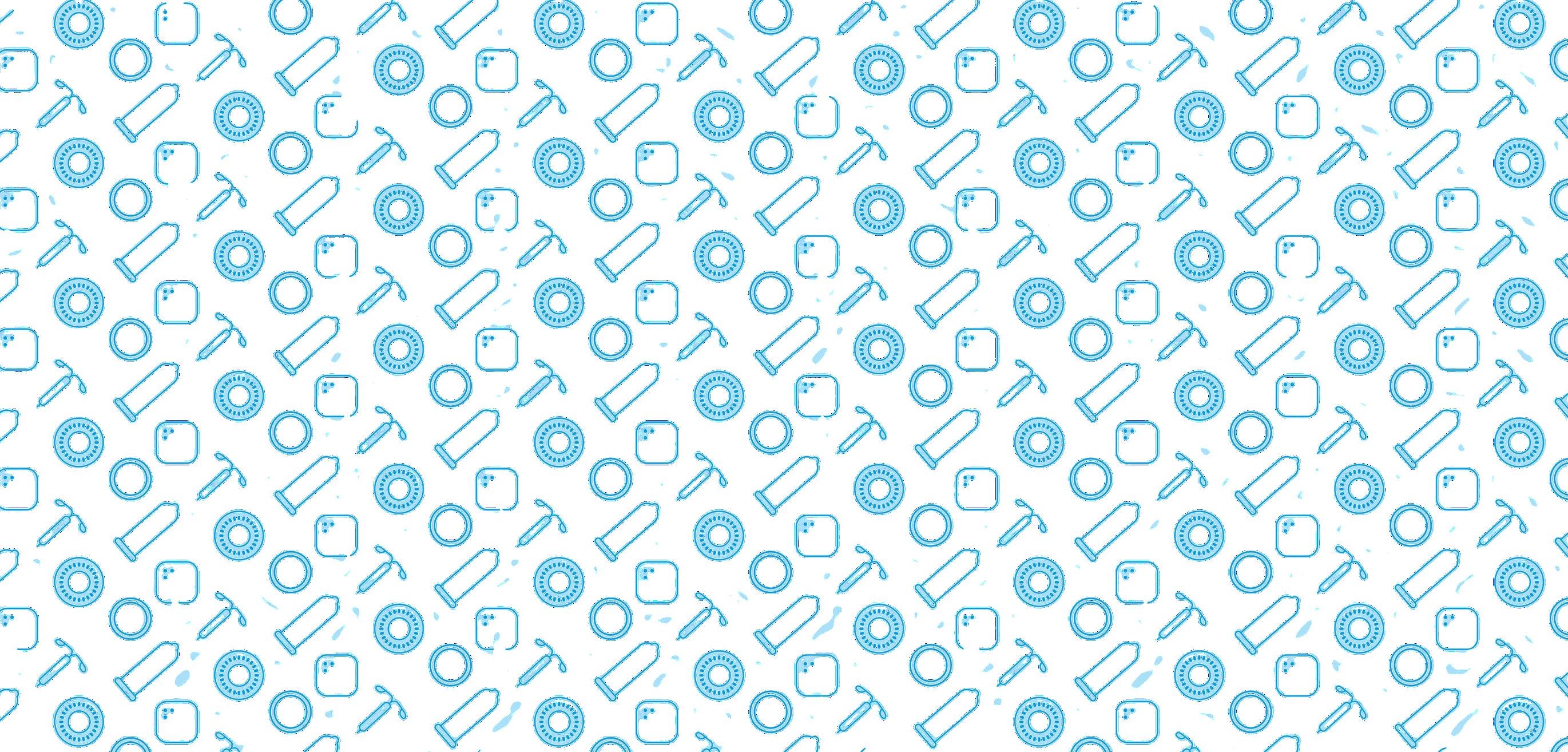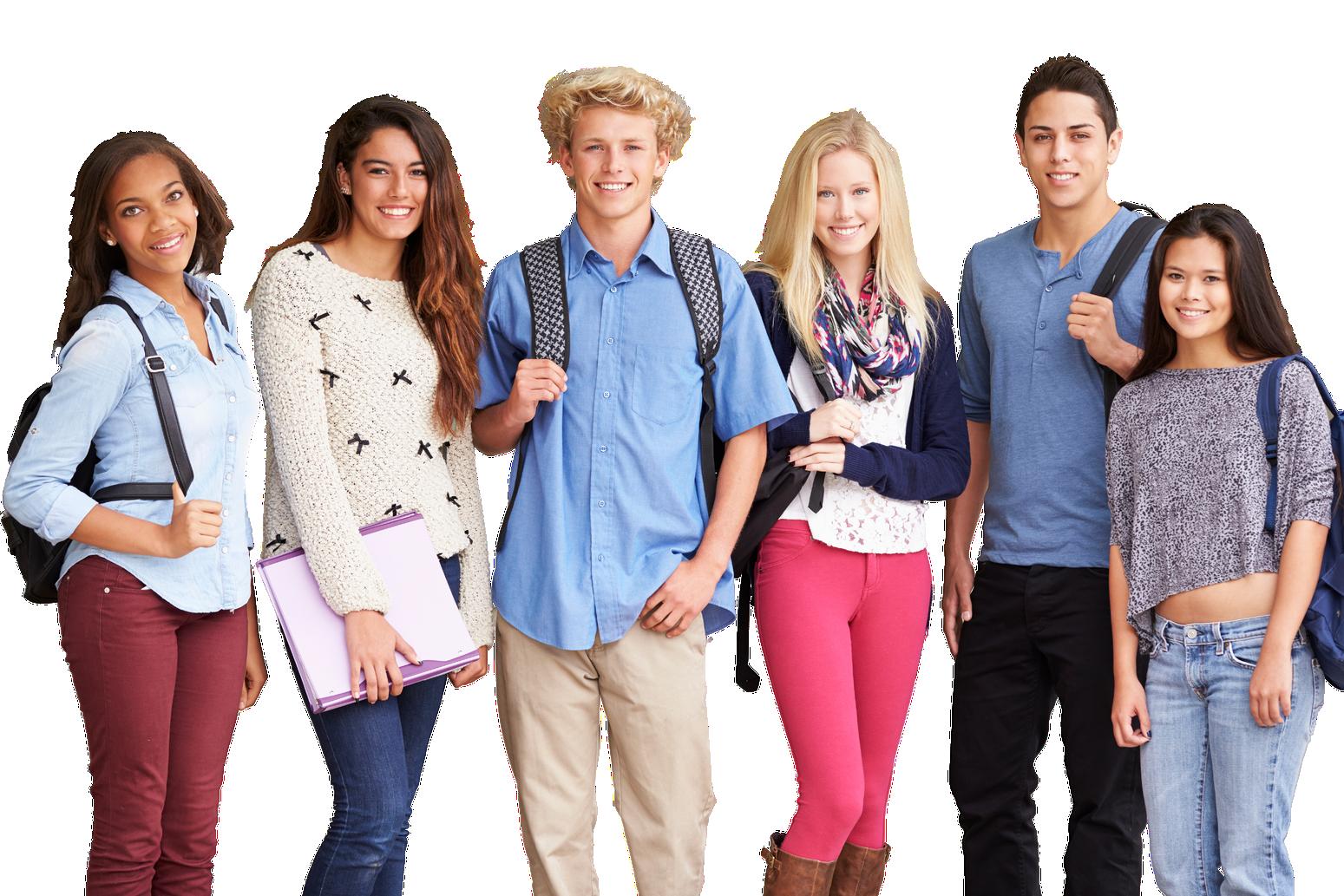




By BRIANNA HARRIS Contrubutor
As people of Northern Utah, we live in a relationship with the Great Salt Lake — a natural wonder that has shaped our landscape, ecosystems and cultures for millennia. Today, this connection offers us a unique opportunity to reflect on how we can work together to restore and protect the beauty and health of this vital ecosystem. Though challenges abound, there is also the chance to embrace solutions that benefit both the environment and the health and well-being of our communities.
On September 20, 1977, Indigenous voices rang out at the United Nations Conference on Desertification, calling for real-time environmental stewardship grounded in a fundamental shift in worldview. Sotsisowah (John Mohawk), a representative of the Haudenosaunee Confederacy, captured this call:
“A strategy for survival must include a liberation theology — call it a philosophy or cosmology if you will… If these processes continue unabated and unchanged at the foundation of the colonizers’ ideology, our species will never be liberated from the undeniable reality that we live on a planet of limited resources, and sooner or later we will exploit our environment beyond its ability to renew itself.”
These words, spoken 47 years ago, continue to resonate today. The call for a global awakening — a reconciliation of our intrinsic connection with the natural world — remains relevant. Yet, in this moment, there is hope: by rethinking our approach now, we can still restore balance to the environment.
Research shows that our environment influences not only physical health but also cognitive and neurological well-being. Pollutants like NO2 and PM10, for example, have been linked to reduced brain volume in areas related to cognitive function, particularly in communities around the Great Salt Lake. Prolonged exposure to such pollutants, especially in industrial areas, has been associated with cognitive decline and diseases like Alzheimer’s, while air pollution also triggers neuroinflammation, contributing to disorders such as autism and ADHD.
Today, the Great Salt Lake faces dangerously low water levels, which threaten both its natural ecosystem and local industries. Still, there remains time to reflect and act. The lake continues to serve as a vital resting stop for millions of migratory birds. By protecting this rich biodiversity now, we are imagining a healthier future for generations to come.
The health of the environment is closely tied to the health of communities. As the lakebed dries up, more toxic dust storms occur, worsening air quality and threatening physical and neurological health. Respiratory and neurological conditions tend to increase in these circumstances, reminding us that protecting natural ecosystems also protects ourselves.
As we contemplate these challenges, it’s worth considering how environmental issues intersect with community health in another way: neurodiversity. Just as the environment thrives on biodiversity, communities thrive when they embrace neurodiversity — the unique cognitive strengths and perspectives that individuals bring. Neurodiverse individuals, including those with autism, ADHD, and other cognitive differences, often offer creative approaches to problem-solving that could help address some of the most pressing environmental issues.
Supporting neurodiverse individuals could begin by fostering environments — both in education and the workplace — that celebrate their strengths rather than viewing them solely as challenges. Creating more flexible and adaptive learning spaces opens opportunities for individuals who process the world differently. Collaborative efforts between educators, employers and communities can ensure that neurodiverse individuals are empowered to lead in areas where their unique strengths shine.
Environmental sustainability, for instance, benefits from innovative thinking. Many neurodiverse individuals excel in pattern recognition, problem-solving, and outof-the-box approaches. By nurturing these talents, we not only provide opportunities for neurodiverse individuals but also gain new perspectives on how to solve complex environmental problems.
Working together in this way, systems that encourage collaboration between neurotypical and neurodiverse individuals can emerge, fostering environments where diverse perspectives are valued. These efforts could start with inclusive education, mentorship, and workplace practices that create spaces where neurodiverse individuals thrive. In striving to heal our environment, perhaps we are also striving to build a society where everyone’s abilities are recognized as crucial to our collective success.
There is also an opportunity to reflect on the emotional and mental impacts of environmental degradation. As the Great Salt Lake continues to shrink, many are feeling what psychologists describe as “environmental grief” — the mental health toll of witnessing the destruction of our natural surroundings. This grief may be seen as a call to action, an invitation to turn collective distress into healing and forward-thinking solutions.
For millennia, Indigenous peoples have understood the deep connection between the health of the Earth and the health of humanity. Their teachings offer us guidance as we reflect on our choices and consider a path forward where both the environment and society thrive in harmony. Rather than viewing the planet and each other as resources to exploit, perhaps we can begin to explore new ways of living that honor both economic growth and environmental stewardship. As Ford Madox Ford’s poem “Footsloggers” (1915) reflects:
What is love of one’s land?
Ah, we know very well
It is something that sleeps for a year, for a day,
For a month, something that keeps
Very hidden and quiet and still, And then takes
The quiet heart like a wave,
The quiet brain like a spell,
The quiet will
Like a tornado, and that shakes
The whole being and soul… Aye, the whole of the soul.
The Great Salt Lake stands at a critical tipping point, and the next generation is poised to shape its future. By supporting youth and giving them the tools and knowl-
edge to lead, the “Class of 2025” could leave behind a legacy of hope and renewal. There is potential for them to co-create unforeseen possibilities with the guidance of Indigenous elders and the backing of a united community.
Children, particularly vulnerable to the effects of environmental damage, offer us a lens through which we can imagine a healthier future. Studies show that reducing fossil fuel use could not only protect the environment but improve neurodevelopmental outcomes in children. Reducing environmental toxins offers a clear way to support the next generation.
Youth-led movements like Fridays for Future, inspired by Greta Thunberg, have already shown that young people are ready to act on climate and environmental issues. The restoration of the Great Salt Lake could become part of their legacy — a contribution to the broader movement to protect our planet’s future.
As we reflect on these challenges and opportunities, one thing becomes clear: this moment invites us all to rise. Students, parents, teachers, and professionals — there is an invitation here to co-create a future full of hope. By joining together, drawing from Indigenous wisdom and supporting our youth, we can nurture a new generation of change-makers. The time is now — for all of us.
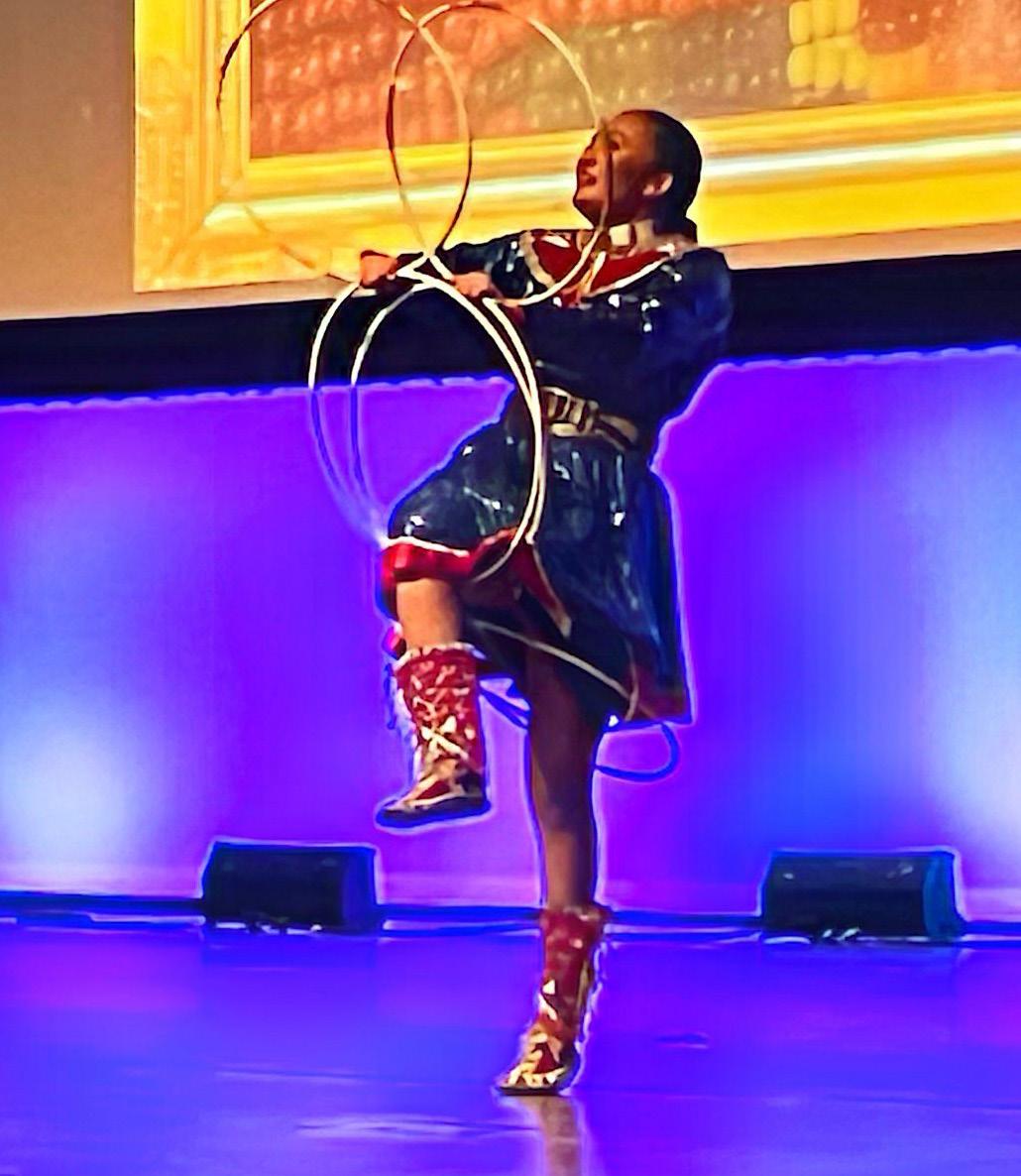
Por NATHANAEL STOUT Traductor
Por BRIANNA HARRIS Contribuitor
Como la gente del norte de Utah, vivimos en una relación con el gran lago Salado –una maravilla natural que nos ha formado el paisaje, ecosistema y cultura durante milenios. Hoy, esta conexión nos ofrece una oportunidad única de reflexionar sobre cómo podemos trabajar juntos para restaurar y proteger la belleza y salud de este ecosistema vital. Aunque hay desafíos, también hay la oportunidad de abrazar soluciones que ayudan tanto el ambiente como la salud y bienestar de nuestras comunidades. El 20 de septiembre de 1977, las voces indígenas sonaron en la conferencia sobre desertificación de los naciones unidas, llamando para administración ambiental en tiempo real basada en un cambio fundamental en la visión del mundo. Sotsisowah (John Mohawk), un representante de la confederación Haudenosaunee, capturó esta llamada:
“Una estrategia de sobrevivencia debe incluir una teología de liberación – se puede llamarla una filosofía o cosmología si es querido… Si estos procesos continúan sin cesar y sin cambio en los cimientos del ideologia de los colonizadores, nuestra especie nunca se liberará de la realidad innegable que vivimos en un planeta de recursos limitados, y tarde o temprano explotaremos el ambiente hasta un punto que no puede renovarse”.
Estas palabras, dichas hace 47 años, continúan resonando hoy. La llamada al mundo de despertar – de reconciliarnos con nuestra conexión intrínseca con el mundo natural – queda relevante. Pero, en este momento, hay esperanza: si reconsideramos nuestra estratégia ahora, todavía podemos restaurar el equilibrio al ambiente.
La investigación muestra que nuestro ambiente no solo influye en la salud física, sino también en el bienestar cognitivo y neurológico. Los contaminantes como NO2 y PM10 por ejemplo, se han relacionado con volumen de cerebro reducido en las áreas relacionadas con la función cognitiva, par-
ticularmente en las comunidades alrededor del gran lago Salido. La exposición prolongada a contaminantes así, especialmente en áreas industriales, se ha relacionado con la debilidad cognitiva y las enfermedades como Alzheimer, mientras que la contaminación del aire también causa la neuroinflamación, contribuyendo a trastornos como el autismo y TDAH (ADHD).
Hoy, el gran lago Salido enfrenta niveles de agua peligrosamente bajo, los cuales amenazan el ecosistema natural y la industria local. Pero, queda tiempo de reflexionar y actuar. El lago continúa sirviendo como una parada vital de descanso para millones de aves migratorias. Al proteger esta biodiversidad rica ahora, imaginamos una futura más saludable para los generaciones que vengan.
La salud del ambiente está muy cercana a la salud de las comunidades. Al secarse el lecho del lago, más tormentas de polvo tóxico ocurran, empeorando la calidad del aire y amenazando la salud física y neurológica. Las condiciones respiratorias y neurológicas tienden a aumentar en estas circunstancias, lo que nos recuerda que la protección de ecosistemas naturales también nos cuida.
Al contemplar estos desafíos, vale considerar cómo asuntos ambientales cruzan con el salud comunitario en otra manera: la neurodiversidad. Así como el ambiente prospera en la biodiversidad, las comunidades también prosperan cuando abrazan a la neurodiversidad – las fortalezas y perspectivas cognitivas únicas que los individuos tienen. Individuos neurodiversos, incluyendo los con el autismo, ADHD, y otras diferencias cognitivas, frecuentemente ofrecen métodos creativos de resolver problemas que puedan ayudar a tratar algunos de los asuntos ambientales más urgentes. Apoyar a estos individuos puede empezar con el fomento de ambientes – tanto en la educación como en el trabajo – que celebran sus esfuerzos en vez de verlos solamente como desafíos. La creación de espacios educativos más flexibles y adaptativos abre las puertas para individuos que procesan el mundo diferentemente. Esfuerzos colaborativos entre educadores, empresas y comunidades pueden asegurar que estos individuos son empoderados a dirigir en las
áreas en que sus fortalezas únicas brillan. La sostenibilidad ambiental, por ejemplo, beneficiarse de pensamiento innovativo. Muchos individuos neurodiversos sobresalen en la reconocimiento de patrones, resolución de problemas y estratégias irregulares. Al promover esos talentos, no solo proveemos oportunidades para estos individuos si no recibimos nuevas perspectivas en cómo resolver problemas complejos del ambiente.
Trabajando juntos así, los sistemas que motivan la colaboración entre individuos neurotípicos y neurodiversos pueden emerger, fomentando ambientes donde las perspectivas diversas son valoradas. Estos esfuerzos podrían empezar con la educación inclusiva, el consejo, y prácticas del trabajo que creen espacios donde los individuos neurodiversos prosperan. Cuando nos esforzamos por curar nuestro ambiente, tal vez también nos esforzamos por crear una sociedad donde las habilidades de todos son vistos como crucial para nuestro éxito colectivo.
También hay una oportunidad para reflexionar sobre los impactos emocionales y mentales de la degradación ambiental. Al reducirse el gran lago Salido, muchos se sienten lo que es descrito por los psicologías como “pena ambiental” – el daño de salud mental de ver la destrucción de nuestro paisaje natural. Esta pena se puede ver como una llamada a la acción, una invitación a cambiar la angustia colectiva por la curación y soluciones que miran al futuro. Durante los milenios. La gente indigena ha entendido la conexión profunda entre la salud de la tierra y de la humanidad. Sus enseñanzas nos ofrecen guía mientras que reflexionamos sobre nuestras decisiones y consideramos un camino adelante donde tanto el ambiente como la sociedad prosperan en armonía. En vez de ver el planeta y otras personas como recursos para explotar, tal vez podemos empezar a explorar nuevas maneras de vivir que honren tanto el crecimiento económico como la administración ambiental. Como reflexiona el poema de Ford Madox Ford llamada “Footsloggers” (1915):
¿Qué es el amor de la tierra?
Ah, lo sabemos muy bien
Es algo que duerme un año, un día,
Un mes, algo que queda
Bien escondido y suave y inmóvil,
Y después toma
El corazón suave como una ola, El cerebro suave como un trance, La voluntad suave
Como un tornado, y después agita
El ser y alma entera…
Sí, el total del alma.
El Great Salt Lake se queda en un punto crítico, y la próxima generación va a ser formadora por su futuro. Soportando a los jóvenes y dándoles los útiles y sabiduría para guiar, “Class of 2025” puede dejar un legado de esperanza y renovación. Hay potencia para ellos para crear nuevas oportunidades con el guianza de los ancianos indígenas y ser apoyados de una comunidad unida.
Particularmente los niños son vulnerables a los efectos del daño al medio ambiente, nos ofrecen un punto de vista en que podemos imaginar un futuro mejor y saludable. Estudios prueban que reduciendo el uso de combustible fósil puede proteger el medio ambiente pero también improbar desarrollo del cerebro en los niños. Reduciendo toxinas del medio ambiente ofrece una manera de apoyar a la próxima generación.
Movimientos dirigidos por los jóvenes como los Viernes para el Futuro, inspirado por Greta Thunberg, ya han mostrado que las personas jóvenes están listos para actuar sobre el clima y los asuntos ambientales. La restauración del gran lago Salado puede llegar a ser un parte de su legado – una contribución al movimiento general de proteger el futuro de nuestro planeta.
Cuando reflexionamos sobre estos desafíos y oportunidades, una cosa se vuelve clara: este movimiento nos invita a levantarnos. Estudiantes, padres, maestros y profesionales – hay una invitación aquí de crear un futuro lleno de esperanza. Al juntarnos, obteniendo la sabiduría indígena y apoyando a nuestros jóvenes, podemos cuidar a una nueva generación de los que hacen cambios. El tiempo es ahora – para todos nosotros.















By GAVIN NELSON Reporter
On Sept. 13 the Weber State University Hockey team fell to in-state rival Utah State University 4–1 in their first game of the season.
The Weber County Ice Sheet was filled to the brim with hockey fans, buzzing to see a great game out on the ice. Last season, the Wildcats had 4 wins and 1 loss against the Aggies in their journey to the national championships. The Aggies were out to get revenge, as they missed out on a trip to St. Louis last season.
The Aggies struck first in the game, with USU defenseman Owen Ramsay just getting the puck past Weber State goalie Owen Yancey. Later in the first period, the Wildcats
tied it up with a goal from freshman defenseman Aiden Thede, in his first collegiate hockey game.
“It was amazing” Thede said after the game, “I was hungry for the puck, I went for it, and I buried it. It was a great adrenaline rush.”
In the second period, the Aggies took back the lead with a goal from forward Sean Johnston. Both teams struggled to make any offense for the rest of the period, which included some great saves from both Yancey and Utah State goalie Titan Anderson.
The third period was paused as soon as it began as three frozen fish were thrown onto the ice. The tradition of throwing fish out started with the Detroit Red Wings when someone threw an octopus out onto the ice. Many other professional and collegiate

teams have followed suit in this tradition including fellow NHL team the Nashville Predators, who throw a catfish, and the University of New Hampshire Wildcats who throw out a large fish.
After the fish were cleaned up from the ice, the third period was able to begin, but things got much worse for the Wildcats. The Aggies scored two goals in less than a minute, with the first coming from forward Griffin Perreault and the second coming from defenseman Nolan Mulneaux. The Wildcats could not get anything else going for the rest of the game and the horn sounded with the Aggies coming out on top 4–1.
One positive that Ryujin took from the game was the showing out from the fans.
“Having the fan support is such a huge part of this experience. For us to have all the people show up that did tonight, I wish we would have given them a little bit better of a show. But at the end of the day, we appreciate that beyond measure.”
The Wildcats look to bounce back next week as they travel down to Salt Lake City to face the University of Utah Utes on Sept. 20. The Wildcats will be back at the Ice Sheet on Sept. 27 to face the Utes once more.
“The guys had a lot of good effort tonight, but there was a lot of energy that was expended,” Yosh Ryujin, Weber State head coach, said. “Especially in the first two periods on just the dumb stuff, all the physical play after the whistles. That stuff takes its toll.”
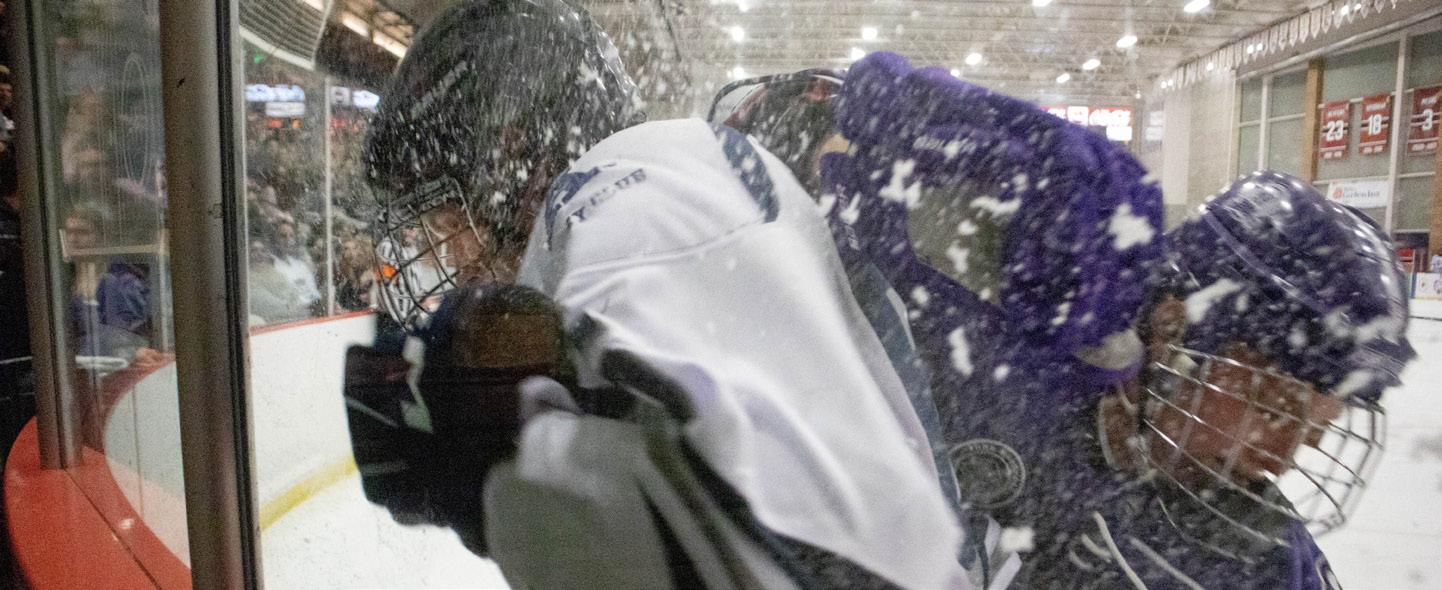
Por VICTORIA HERNANDEZ Traductor
Por GAVIN NELSON Reportero
El 13 de septiembre el equipo de Hockey de Weber State University perdió ante su rival estatal, Utah State University, 4-1 en su primer partido de la temporada.
El Weber County Ice Sheet estaba lleno hasta el borde de aficionados al hockey, emocionados por ver un gran partido sobre el hielo. La temporada pasada, los Wildcats ganaron 4-1 a los Aggies en su camino hacia el campeonato nacional. Los Aggies estaban en modo para vengarse, ya que la temporada pasada no pudieron viajar a San Louis. Los Aggies atacaron primero en el juego, con el defensa de USU Owen Ramsay ape-
nas consiguiendo el disco pasado por el portero de Weber State Owen Yancey. Más tarde en el primer periodo, los Wildcats empataron con un gol del defensa de primer año Aiden Thede, en su primer partido de hockey universitario.
“Fue increíble”, dijo Thede después del partido. “Estaba ansioso por el disco, fuí por él y lo metí. Fue un golpe de adrenalina”.
En el segundo periodo, los Aggies recuperaron la ventaja con un gol del delantero Sean Johnston. Ambos equipos intentaron atacar durante el resto del periodo, en el que Yancey y Titan Anderson, el portero de Utah State, realizaron grandes intervenciones.
El tercer periodo se interrumpió en cuanto empezó, ya que se lanzaron tres peces congelados al hielo. La tradición de arrojar peces comenzó con los Detroit Red Wings,
cuando alguien lanzó un pulpo al hielo. Muchos otros equipos profesionales y universitarios han seguido esta tradición, como los Predators de Nashville, otro equipo de la NHL, que lanzan un siluro, y los Wildcats de la Universidad de New Hampshire, que lanzan un gran pez.
Después de que los peces fueron retirados del hielo, el tercer período pudo comenzar, pero las cosas se pusieron en contra de los Wildcats. Los Aggies marcaron dos goles en menos de un minuto, el primero del delantero Griffin Perreault y el segundo del defensa Nolan Mulneaux. Los Wildcats no pudieron hacer nada más durante el resto del partido y sonó la bocina con los Aggies ganando 4-1.
“Los chicos se esforzaron mucho esta noche, pero gastaron mucha de su energía”, dijo Yosh Ryujin, entrenador de Weber
State. “Especialmente en los dos primeros periodos, por las jugadas tontas, todo el juego físico después de los silbatos. Eso pasa facturas”.
Un aspecto positivo que Ryujin tomó del juego fue la afluencia de los aficionados.
“Tener el apoyo del público es una parte importante de esta experiencia. Ojalá hubiéramos ofrecido un espectáculo un poco mejor, pero, al final del día, se los agradecemos infinitamente”.
Los Wildcats intentarán recuperarse la semana que viene cuando viajen a Salt Lake City para enfrentarse a los Utes de la Universidad de Utah el 20 de septiembre. Los Wildcats volverán al Ice Sheet el 27 de septiembre para enfrentarse nuevamente a los Utes en casa.

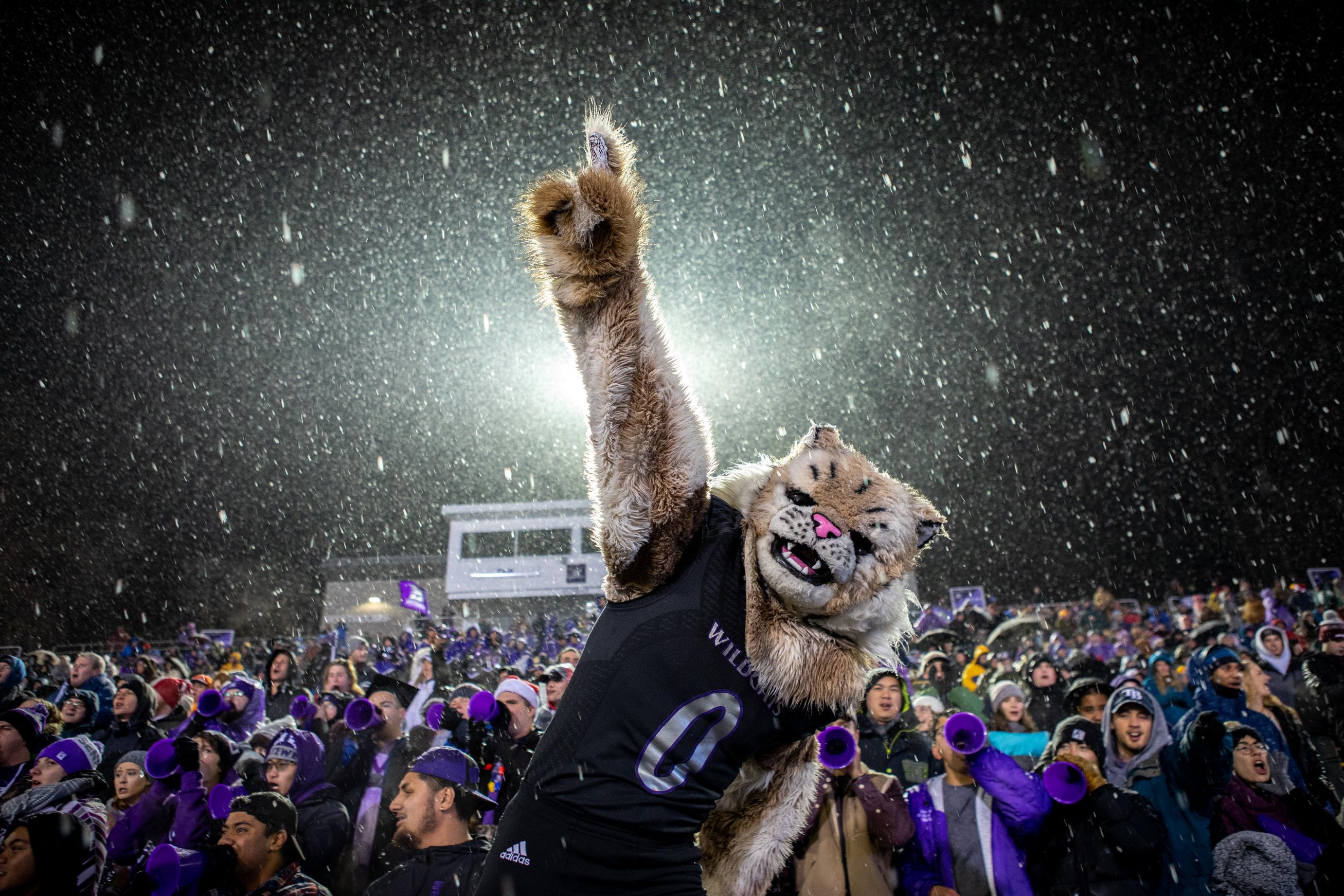
weber.edu/student-access-success/student-fees.html
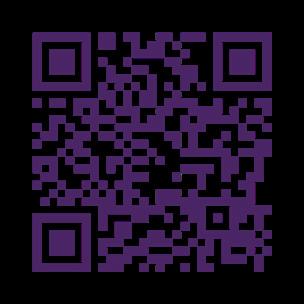
weber.edu/wildcatwelcome
Constitutional Amendment A
Ballot Title
Shall the Utah Constitution be amended to allow income tax money to be used for all state needs and prioritize public education funding for changes in enrollment and inflation? If this amendment is approved, state statute will eliminate the state sales tax on food.
PROPOSAL TO AMEND UTAH CONSTITUTION - INCOME TAX
2023 General Session
Utah Constitution Sections Affected: AMENDS:
ARTICLE XIII, SECTION 5
Be it resolved by the Legislature of the state of Utah, two-thirds of all members elected to each of the two houses voting in favor thereof:
Section 1. It is proposed to amend Utah Constitution, Article XIII, Section 5, to read: Article XIII, Section 5. [Use and amount of taxes and expenditures.]
(1) (a) The Legislature shall provide by statute for an annual tax sufficient, with other revenues, to defray the estimated ordinary expenses of the State for each fiscal year.
(b) If the ordinary expenses of the State will exceed revenues for a fiscal year, the Governor shall:
(i) reduce all State expenditures on a pro rata basis, except for expenditures for debt of the State; or
(ii) convene the Legislature into session under Article VII, Section 6 to address the deficiency.
(2) (a) For any fiscal year, the Legislature may not make an appropriation or authorize an expenditure if the State's expenditure exceeds the total tax provided for by statute and applicable to the particular appropriation or expenditure.
(b) Subsection (2)(a) does not apply to an appropriation or expenditure to suppress insurrection, defend the State, or assist in defending the United States in time of war.
(3) For any debt of the State, the Legislature shall provide by statute for an annual tax sufficient to pay:
(a) the annual interest; and
(b) the principal within 20 years after the final passage of the statute creating the debt.
(4) Except as provided in Article X, Section 5, Subsection (5)(a), the Legislature may not impose a tax for the purpose of a political subdivision of the State, but may by statute authorize political subdivisions of the State to assess and collect taxes for their own purposes.
(5) All revenue from taxes on intangible property or from a tax on income shall be used:
(a) to support the systems of public education and higher education as defined in Article X, Section 2; [and]
(b) to maintain a statutory public education funding framework that:
(i) uses a portion of revenue growth for expenditures from the Uniform School Fund for changes in student enrollment and long-term inflation; and
(ii) provides a budgetary stabilization account;
[(b)] (c) to support children and to support individuals with a disability[ ]; and
(d) to support other state needs after the fulfillment of the requirements in Subsection (5)(b).
(6) Proceeds from fees, taxes, and other charges related to the operation of motor vehicles on public highways and proceeds from an excise tax on liquid motor fuel used to propel those motor vehicles shall be used for:
(a) statutory refunds and adjustments and costs of collection and administration;
(b) the construction, maintenance, and repair of State and local roads, including payment for property taken for or damaged by rights-of-way and for associated administrative costs;
(c) driver education;
(d) enforcement of state motor vehicle and traffic laws; and
(e) the payment of the principal of and interest on any obligation of the State or a city or county, issued for any of the purposes set forth in Subsection (6)(b) and to which any of the fees, taxes, or other charges described in this Subsection (6) have been pledged, including any paid to the State or a city or county, as provided by statute.
(7) Fees and taxes on tangible personal property imposed under Section 2, Subsection (6) of this article are not subject to Subsection (6) of this Section 5 and shall be distributed to the taxing districts in which the property is located in the same proportion as that in which the revenue collected from real property tax is distributed.
(8) A political subdivision of the State may share its tax and other revenues with another political subdivision of the State as provided by statute.
(9) Beginning July 1, 2016, the aggregate annual revenue from all severance taxes, as those taxes are defined by statute, except revenue that by statute is used for purposes related to any federally recognized Indian tribe, shall be deposited annually into the permanent State trust fund under Article XXII, Section 4, as follows:
(a) 25% of the first $50,000,000 of aggregate annual revenue;
(b) 50% of the next $50,000,000 of aggregate annual revenue; and
(c) 75% of the aggregate annual revenue that exceeds $100,000,000.
Section 2. Submittal to voters.
The lieutenant governor is directed to submit this proposed amendment to the voters of the state at the next regular general election in the manner provided by law.
Section 3. Contingent effective date.
If the amendment proposed by this joint resolution is approved by a majority of those voting on it at the next regular genera election, the amendment shall take effect on January 1, 2025.
Constitutional Amendment B Ballot Title
Shall the Utah Constitution be amended to increase the limit on the annual distributions from the State School Fund to public schools from 4% to 5% of the fund?
PROPOSAL TO AMEND UTAH CONSTITUTION - STATE SCHOOL FUND
2023 General Session
Utah Constitution Sections Affected: AMENDS:
ARTICLE X, SECTION 5
Be it resolved by the Legislature of the state of Utah, two-thirds of all members elected to each of the two houses voting in favor thereof: Section 1. It is proposed to amend Utah Constitution, Article X, Section 5, to read: Article X, Section 5. [State School Fund and Uniform School Fund Establishment and use Debt guaranty.]
(1) There is established a permanent State School Fund which consists of:
(a) proceeds from the sales of all lands granted by the United States to this state for the support of the public elementary and secondary schools;
(b) 5% of the net proceeds from the sales of United States public lands lying within this state;
(c) all revenues derived from nonrenewable resources on state lands, other than sovereign lands and lands granted for other specific purposes;
(d) all revenues derived from the use of school trust lands;
(e) revenues appropriated by the Legislature; and
(f) other revenues and assets received by the permanent State School Fund under any other provision of law or by bequest or donation.
(2) (a) The permanent State School Fund shall be prudently invested by the state and shall be held by the state in perpetuity
(b) Only earnings received from investment of the permanent State School Fund may be distributed from the fund, and any distribution from the fund shall be for the support of the public education system as defined in Article X, Section 2 of this constitution.
(c) Annual distributions from the permanent State School Fund under Subsection (2)(b) may not exceed [4%] 5% of the fund, calculated as provided by statute.
(d) The Legislature may make appropriations from school trust land revenues to provide funding necessary for the proper administration and management of those lands consistent with the state's fiduciary responsibilities towards the beneficiaries of the school land trust. Unexpended balances remaining from the appropriation at the end of each fiscal year shall be deposited in the permanent State School Fund.
(e) The permanent State School Fund shall be guaranteed by the state against loss or diversion.
(3) There is established a Uniform School Fund which consists of:
(a) money from the permanent State School Fund;
(b) revenues appropriated by the Legislature; and
(c) other revenues received by the Uniform School Fund under any other provision of law or by donation.
(4) The Uniform School Fund shall be maintained and used for the support of the state's public education system as defined in Article X, Section 2 of this constitution and apportioned as the Legislature shall provide.
(5) (a) Notwithstanding Article VI, Section 29, the State may guarantee the debt of school districts created in accordance with Article XIV, Section 3, and may guarantee debt incurred to refund the school district debt. Any debt guaranty, the school district debt guaranteed thereby, or any borrowing of the state undertaken to facilitate the payment of the state's obligation under any debt guaranty shall not be included as a debt of the state for purposes of the 1.5% limitation of Article XIV, Section 1.
(b) The Legislature may provide that reimbursement to the state shall be obtained from monies which otherwise would be used for the support of the educational programs of the school district which incurred the debt with respect to which a payment under the state's guaranty was made.
Section 2. Submittal to voters.
The lieutenant governor is directed to submit this proposed amendment to the voters of the state at the next regular general election in the manner provided by law.
Section 3. Contingent effective date.
If the amendment proposed by this joint resolution is approved by a majority of those voting on it at the next regular general election, the amendment shall take effect on January 1, 2025.
Constitutional Amendment C Ballot Title
Shall the Utah Constitution be amended to have the office of county sheriff be elected by voters?
PROPOSAL TO AMEND UTAH CONSTITUTION - ELECTION OF COUNTY SHERIFFS
2023 General Session
Utah Constitution Sections Affected:
ENACTS:
ARTICLE XI, SECTION 10
Be it resolved by the Legislature of the state of Utah, two-thirds of all members elected to each of the two houses voting in favor thereof:
Section 1. It is proposed to enact Utah Constitution Article XI, Section 10, to read:
Article XI, Section 10. [Election of County Sheriffs.]
(1) Each county shall have an office of county sheriff.
(2) The office of county sheriff is an elected office.
(3) Their term of office shall be four years from the first day of January next after their election.
Section 2. Submittal to voters.
The lieutenant governor is directed to submit this proposed amendment to the voters of the state at the next regular general election in the manner provided by law.
Section 3. Contingent effective date
If the amendment proposed by this joint resolution is approved by a majority of those voting on it at the next regular general election, the amendment shall take effect on January 1, 2025.
Constitutional Amendment D
2024 Fourth Special Session
House Joint Resolution (S.J.R) 401
Proposal to Amend Utah Constitution - Voter Legislative Power
Ballot Title
Should the Utah Constitution be changed to strengthen the initiative process by:
- Prohibiting foreign influence on ballot initiatives and referendums.
- Clarifying the voters and legislative bodies’ ability to amend laws.
If approved, state law would also be changed to:
- Allow Utah citizens 50% more time to gather signatures for a statewide referendum.
- Establish requirements for the legislature to follow the intent of a ballot initiative.
PROPOSAL TO AMEND UTAH CONSTITUTION - VOTER LEGISLATIVE POWER
2024 Fourth Special Session
Utah Constitution Sections Affected:
AMENDS:
ARTICLE I, SECTION 2
ARTICLE VI, SECTION 1
Be it resolved by the Legislature of the state of Utah, two-thirds of all members elected to each of the two houses voting in favor thereof:
Section 1. It is proposed to amend Utah Constitution, Article I, Section 2, to read:
Article I, Section 2 . All political power inherent in the people
All political power is inherent in the people; and all free governments are founded on their authority for their equal protection and benefit, and they have the right to alter or reform their government through the processes established in Article VI, Section 1, Subsection (2), or through Article XXIII as the public welfare may require.
Section 2. It is proposed to amend Utah Constitution, Article VI, Section 1, to read:
Article VI, Section 1 . Power vested in Senate, House, and People Prohibition of foreign influence on initiatives and referenda.
(1) The Legislative power of the State shall be vested in:
(a) a Senate and House of Representatives which shall be designated the Legislature of the State of Utah; and
(b) the people of the State of Utah as provided in Subsection (2).
(2)(a)(i) The legal voters of the State of Utah, in the numbers, under the conditions, in the manner, and within the time provided by statute, may:
(A) initiate any desired legislation and cause it to be submitted to the people for adoption upon a majority vote of those voting on the legislation, as provided by statute; or
(B) require any law passed by the Legislature, except those laws passed by a two-thirds vote of the members elected to each house of the Legislature, to be submitted to the voters of the State, as provided by statute, before the law may take effect.
(ii) Notwithstanding Subsection (2)(a)(i)(A), legislation initiated to allow, limit, or prohibit the taking of wildlife or the season for or method of taking wildlife shall be adopted upon approval of two-thirds of those voting.
(b) The legal voters of any county, city, or town, in the numbers, under the conditions, in the manner, and within the time provided by statute, may:
(i) initiate any desired legislation and cause it to be submitted to the people of the county, city, or town for adoption upon a majority vote of those voting on the legislation, as provided by statute; or
(ii) require any law or ordinance passed by the law making body of the county, city, or town to be submitted to the voters thereof, as provided by statute, before the law or ordinance may take effect.
(3)(a) Foreign individuals, entities, or governments may not, directly or indirectly, influence, support, or oppose an initiative or a referendum.
(b) The Legislature may provide, by statute, definitions, scope, and enforcement of the prohibition under Subsection (3)(a).
(4) Notwithstanding any other provision of this Constitution, the people's exercise of their Legislative power as provided in Subsection (2) does not limit or preclude the exercise of Legislative power, including through amending, enacting, or repealing a law, by the Legislature, or by a law making body of a county, city, or town, on behalf of the people whom they are elected to represent.
Section 3. Submittal to voters.
The lieutenant governor is directed to submit this proposed amendment to the voters of the state at the next regular general election in the manner provided by law.
Section 4. Contingent effective date.
If the amendment proposed by this joint resolution is approved by a majority of those voting on it at the next regular general election, the amendment shall take effect on January 1, 2025 .
Section 5. Retrospective operation.
The actions affecting Article I, Section 2 and Article VI, Section 1, Subsection (4) have retrospective operation.
By COLLYN COWLES Editor
On Sept. 14, Weber State University’s football team suffered a narrow 17–16 defeat to the Lamar University Cardinals in Beaumont, Texas. The game came down to a missed 40-yard field goal by Kyle Thompson as the game clock expired, sealing the Wildcats’ loss in their first-ever meeting against Lamar.
The game began with Lamar controlling the clock. The Cardinals put together a 14play drive that consumed more than seven minutes, leading to a 23-yard field goal to take an early 3–0 lead.
Both teams struggled to find offensive rhythm after that, with back-to-back punts before Weber State fumbled, setting up another Lamar scoring drive. Lamar capitalized on the turnover, extending their lead to 10–0 with a touchdown in the second quarter.
Weber State turned the momentum just before halftime. With 3:07 left in the second quarter, the Wildcats managed a drive
that ended with a 42-yard field goal by Kyle Thompson, cutting the lead to 10–3.
Moments later, on Lamar’s next possession, Weber State’s Montae Pate intercepted a pass and returned it 30 yards for a game-tying touchdown. The first half ended with both teams tied at 10–10.
The Wildcats came out strong in the second half, quickly marching down the field.
Quarterback Richie Munoz connected with Jacob Sharp for a 31-yard gain that set the Wildcats up at the 2-yard line. Munoz then found Colter May for a 2-yard touchdown pass, giving Weber State a 16–10 lead after a missed extra point by Thompson.
Lamar responded immediately, scoring on a 72-yard touchdown run to reclaim the lead at 17–16 with nine minutes remaining in the third quarter. A missed 44-yard field goal attempt by Thompson later in the quarter prevented Weber State from regaining the lead.
The fourth quarter was a defensive battle. Both teams traded punts, and Weber State’s
offense stalled. However, with just over 10 minutes remaining, the Wildcats began a lengthy 20-play, 95-yard drive that took nearly nine minutes off the clock. Despite reaching the 1-yard line, Weber State opted for a touchdown on fourth down, but Lamar’s defense stood firm, stopping Bankston just short of the goal line.
The Wildcats forced Lamar to punt and got the ball back with 44 seconds left. Munoz moved the offense down the field to the 23yard line, setting up a potential game-winning 40-yard field goal. However, Thompson’s kick missed as time expired, and Weber State fell 17–16.
The loss dropped Weber State to 1–2 for the season as they prepare for another away game next week.
Starting Sophomore quarterback Richie Munoz is currently 52/92 on pass completions and has 501 total yards with two passing touchdowns.
Damon Bankston, the starting junior run-
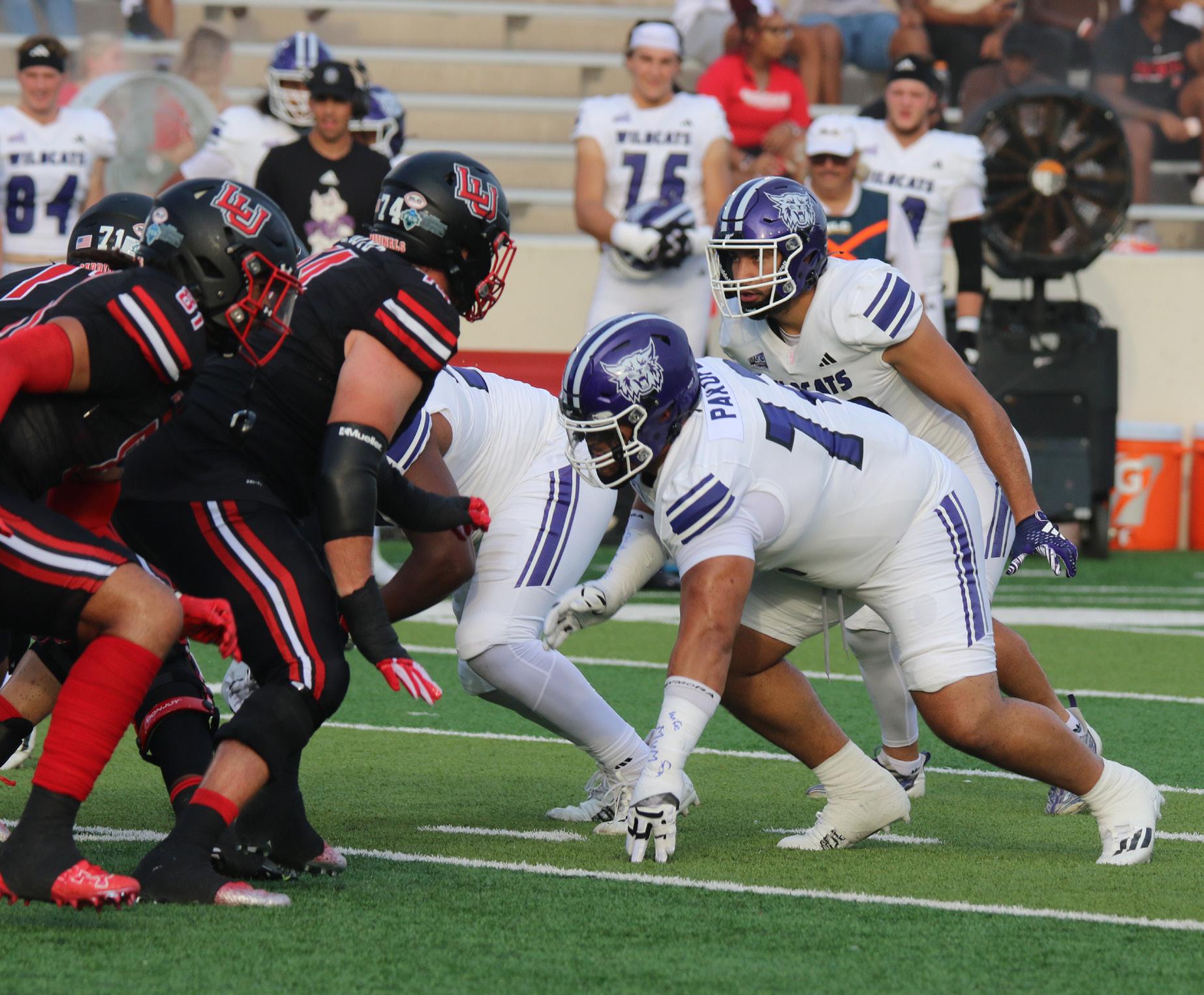
ning back, has had 54 carries, 321 rushing yards and two rushing touchdowns.
Starting as a senior wide receiver, Jacob Sharp had 13 receptions in the first three games, with 160 reception yards and one catching touchdown.
The Wildcats will face Northwestern State University in Natchitoches, Louisiana, on Sept. 21 at 5 p.m.



Every voter should feel confident and empowered on their way to the ballot box.
Join us for educational events that boost stress-free voting by helping you navigate the democratic process.
CHECK OUT UPCOMING NONPARTISAN EVENTS:
By BRAYSON BROWN Assistant Editor
By TRISTIN RAMAGE Reporter
On Sept. 12, Weber State University’s women’s soccer team ran onto Dacotah field and took their first win of the season against North Dakota State University with a score of 4–2.
“I think it’s a good thing, not in terms of wins but it helps our team with the young players adapt to see what is required,” head coach Craig Sanders said.
Both Sayler Schlosser and Amanda Caswell took the team’s reins and led Weber to Victory. Schlosser started the game off in the right direction by scoring twice in the span of six minutes to give the Wildcats a 2–0 cushion. Weber displayed dominance in the first half, recording six shots to North
Dakota’s zero.
The second half was a different story. The NDSU halftime pep talk worked as they were able to pump the brakes on Weber, trying to cruise to their first win of the season. Bison Devon Kavanagh single-handedly took the game back after scoring on a corner kick to put North Dakota on the board. Seconds later, Kavanagh tied the game as she struck from 25 yards to level the game at 2–2.
Weber State midfielder Amanda Caswell put the team on her back and got a second-half brace to bring the final score 4–2.
Goalkeeper Annika Franz recorded three saves throughout the game to preserve the lead and the Wildcats took their first victory of the season.
“We needed the win,” Sanders said. “We were up 2, and they equalized in a short period of time. We made mistakes, but the nice thing is we turned it right around.”
After being on the road for the last two games, Weber State faced off against the Utah State University Aggies at home on Sept. 17. Heading into the game, Utah State was ranked No. 9 in the nation and is currently undefeated.
To start the game, the Aggies scored early off a deflection from Weber State defender Bella Sackett. The Wildcats began to get a groove, maintaining possession of the ball and forcing Utah State to play off their momentum. Star forward Ali Swensen then answered the call and scored with a right-footed shot from outside the 18-yard box at the 40-minute mark. The first half ended in a 1–1 draw.
Halftime came around the corner, and Weber took the lead with a left-footed shot by Lily Blum. However, Utah State showed its horns by scoring two goals in two minutes to retake the lead and all the momentum with them.
The Aggies scored once more to put an end to the idea of an upset and won the game 4–2.
“I have always maintained that preseason is a good test for us, and we want to see what we’ve got,” Sanders said.
The Wildcats were toe to toe with one of the best teams in the nation, showing that there is something to build on for conference play.
Weber played a great game, finishing with seven total shots with two of them on target. The Wildcats showed creativity with passing and maintaining the majority of the possession against the 9th best team in the nation.
The women’s soccer team will be traveling to Orem, Utah to face off against Utah Valley University on Sept. 19. The Wildcats will return to the Wildcat soccer field to face off against the University of Wyoming Cowgirls on Sept. 22 at 1 p.m.
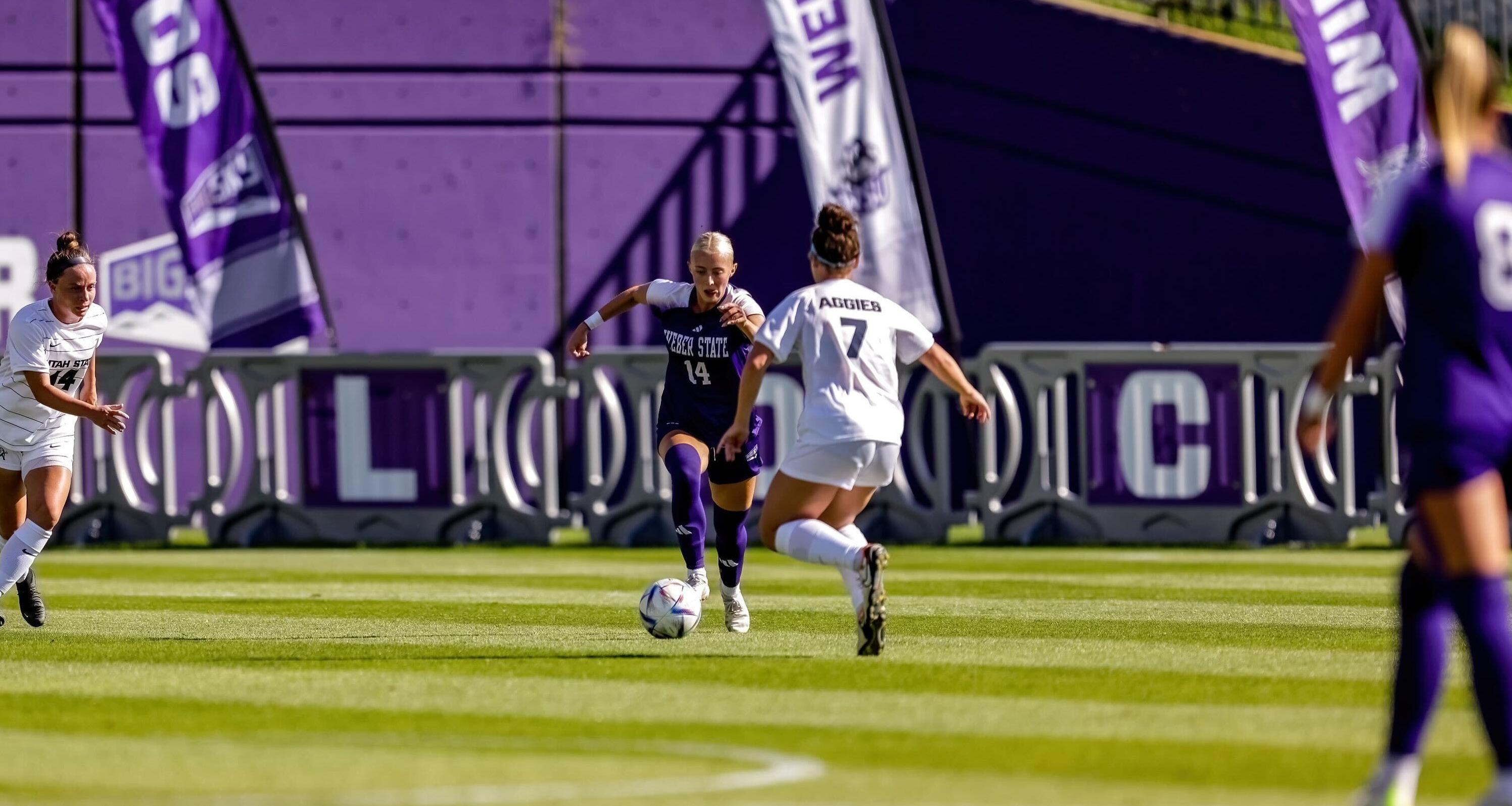
By ALFONSO RUBIO Reporter
To kick off the new hockey season against Utah State University, the Weber State University Student Association held a tailgate to set the energy right before the game.
The tailgate showcased various attractions and activities, such as spikeball, an inflatable sword fighting game and nine square. The tailgate also offered free J. Dawgs hot dogs, face painting and music.
Every guest was offered a raffle ticket on entry, giving them an opportunity to earn the prize of a Weber State T-shirt. Attendees were also able to participate in the tailgate cornhole tournament.
Although the turnout started slow, students and hockey fans in the community eventually made their way to the Ice Sheet parking lot in preparation for a long-awaited return of WSU hockey. Despite the slow start, fan numbers soared at the tailgate,
even selling out the J. Dawgs truck less than an hour and a half after the event started.
As the game doors opened, dozens of people swarmed from the tailgate into the Ice Sheet in a rush to grab their seats. The first game of the season was anticipated to be highly attended.
Many students who attended claimed they were jumping at the opportunity to get free food, while also intermingling with fellow classmates and getting the vibe ready for puck drop.
“My favorite thing about the tailgate was just being around other people that are here
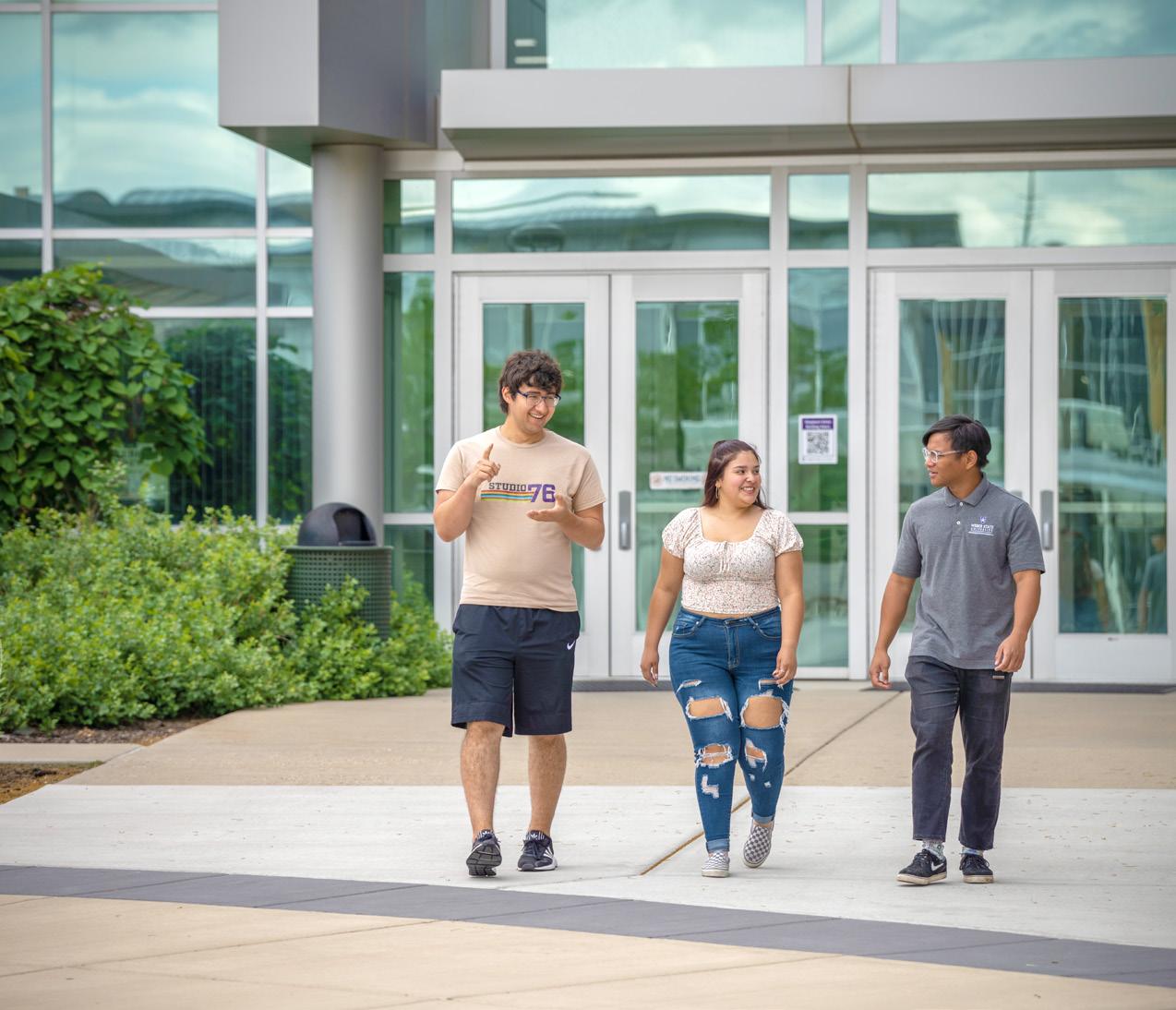
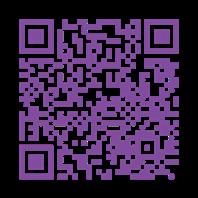
to just come watch hockey,” Weber State University sophomore Everett Page said.
Weber State hockey celebrates its 30th year as a team and something noticeable at the tailgate was the diversity among the attendees. At the tailgate, individuals could find students and community members who were attending their first-ever hockey game, those who have attended for years and those who grew up coming to games.
“My dad is who got me into hockey … when I was younger, we went to hockey games here,” WSU alumni Kenidy Miller stated. Even continuing into WSU hockey’s
30th anniversary season, this team continues to encourage an inclusive, loud and proud fanbase.
Whether individuals are new fans or old fans, Weber’s hockey fans are encouraged to attend future games. If the hockey crowd’s liveliness proved anything, the tailgate turnout was an astounding success in setting the mood for the season.
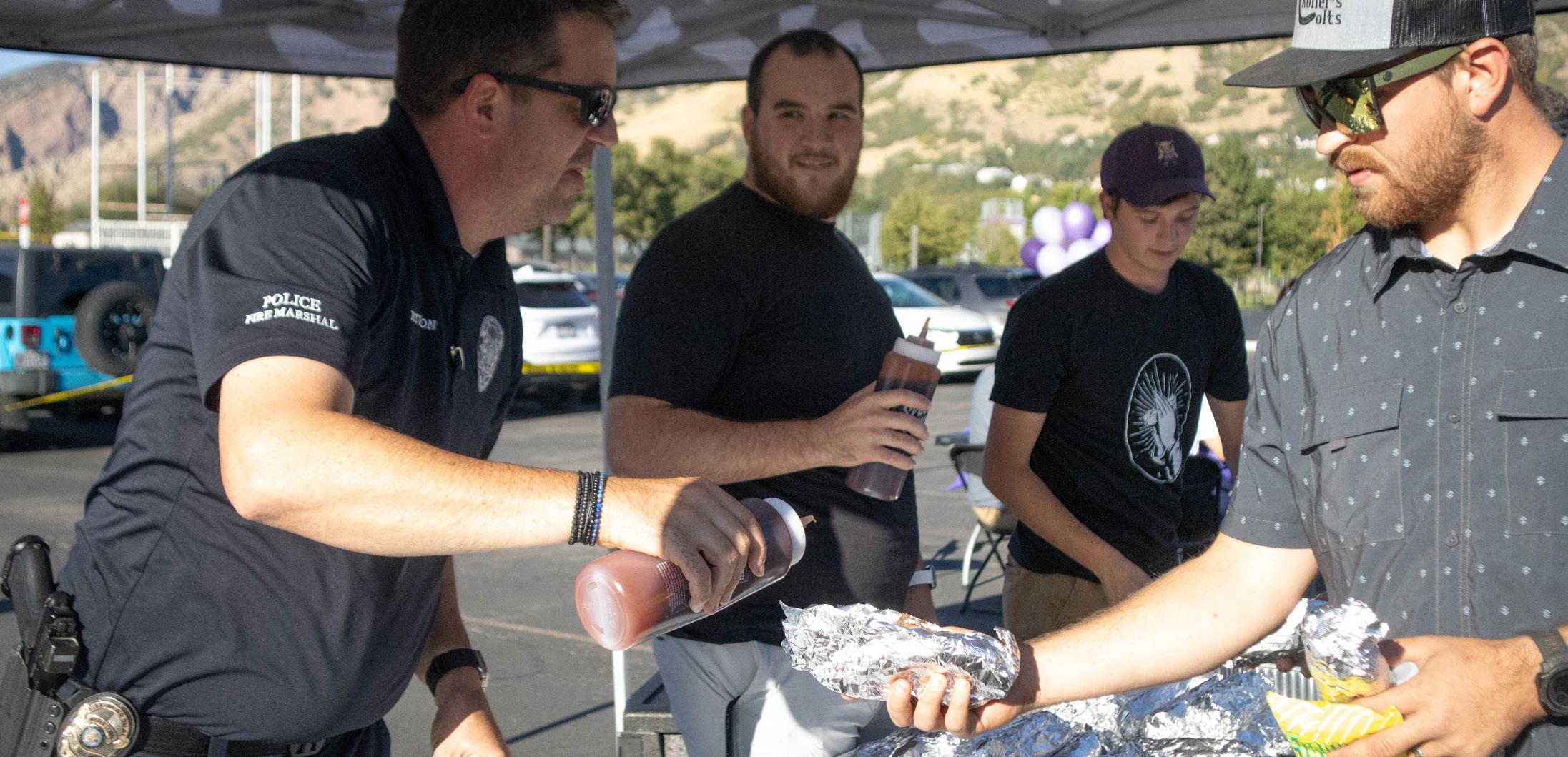
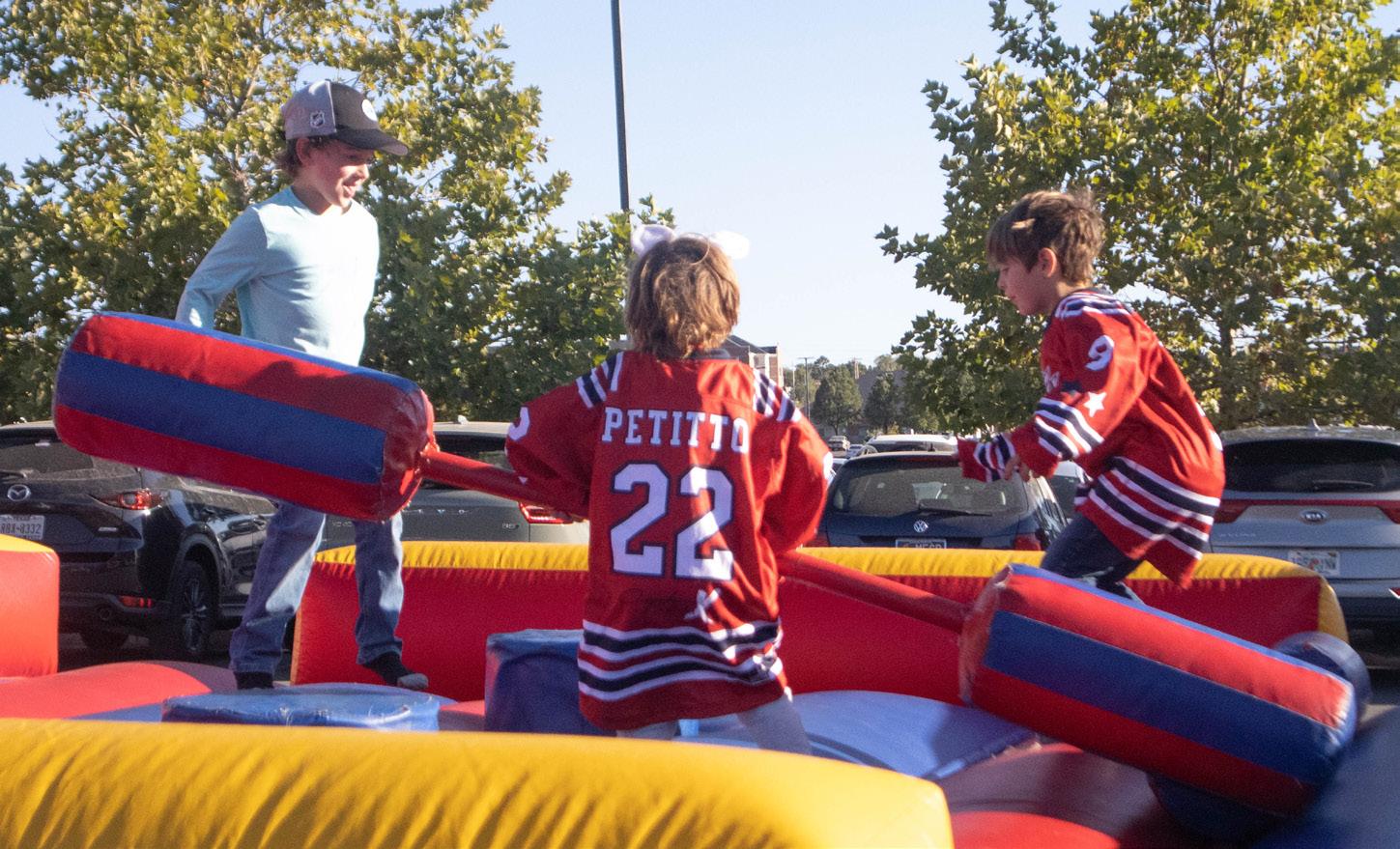

By MEGAN SWANN Editor
KWCR hopes to bring live music to Weber State University campus through their new event, “In the Fishbowl.”
Named after the large glass window in its studio on the second floor of Shepherd Union, the radio station planned three concerts throughout the semester. The first one, with local musician Wyatt Goodwin, took place on Sept. 13, and the other concerts are scheduled for Sept. 27 and Oct. 11.
KWCR Station Manager Ivonne Camas said that when she entered her position, she knew she wanted the station to connect more with the Weber State and Ogden communities.
“I had noticed that we haven’t done a live event since the ‘80s,” Camas said.
The station has hosted a few live events in
the last few semesters, including KWCR Fest at the end of the spring semester. Nathan McKnight, the promotions director, said the musicians picked for “In the Fishbowl,” like Goodwin, were ones previously considered to perform at KWCR Fest.
“We didn’t want to burden ourselves putting a big festival on every semester, and we also wanted to diversify a little bit,” McKnight said.
These concerts take place inside the studio rather than on a stage like a big festival. McKnight said they took inspiration from the NPR Tiny Desk Concert series, where artists perform live in a small office space.
Live audiences can watch from the hallway outside the studio window, referred to as the “fishbowl” by KWCR staff.
“We call it the fishbowl because people come and press their face up to it or tap on the glass. And sometimes you feel like a
fish sitting there being watched,” McKnight said.
Additionally, the studio livestreamed the concert on Instagram and Twitch. McKnight said he hoped the livestream would encourage more people to attend in person for the next few “In the Fishbowl” concerts.
“We’re encouraging people to come to the station so they see our cute little aquatic-themed decorations, but we’re also trying to make it more online, too,” Camas said. “I know how hard it is. Sometimes you leave campus around two and you don’t want to come back.”
Camas said that realistically, even if there isn’t a large turnout, the event is still useful because it allows local artists to perform and allows KWCR students to use the skills they learn in their radio classes.
“So as long as we’re all working together, we all have fun and then the person still
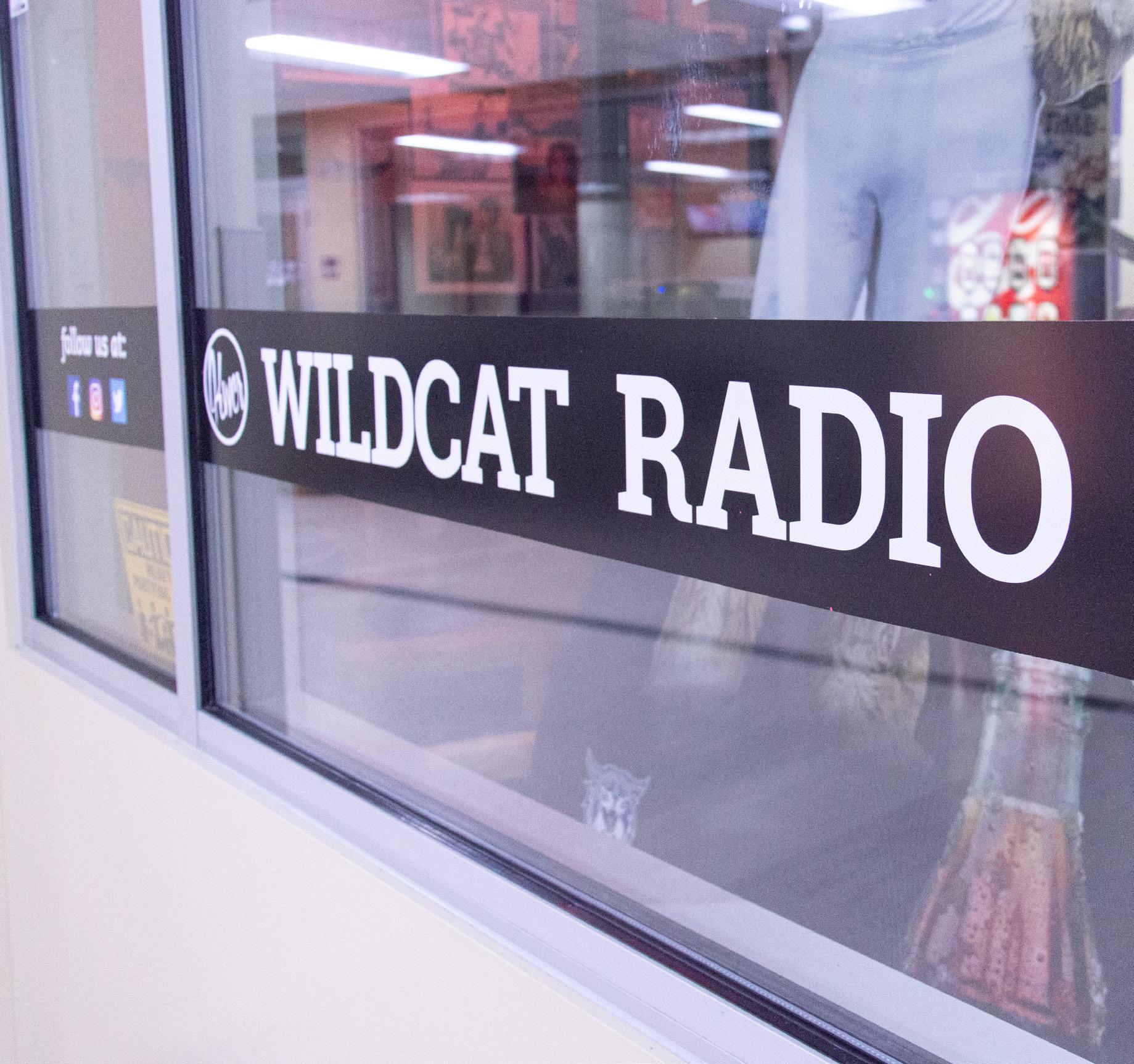
performs and we still have that, I’m happy,” Camas said.
Goodwin’s concert started at 5 p.m., and he performed a few of his songs, which he describes as “indie rock.” He said the concert went well and was very relaxing.
“All the people there are really nice, and they’re able to get things set up pretty well,” Goodwin said.
Goodwin said he played two of his favorite songs at the concert: “Me and My Girl” and “Fleetwood.”
His music is available on Bandcamp, Spotify, Apple Music, SoundCloud and YouTube. He is looking forward to an upcoming EP release at the beginning of October and hopes for an album release in February 2025.
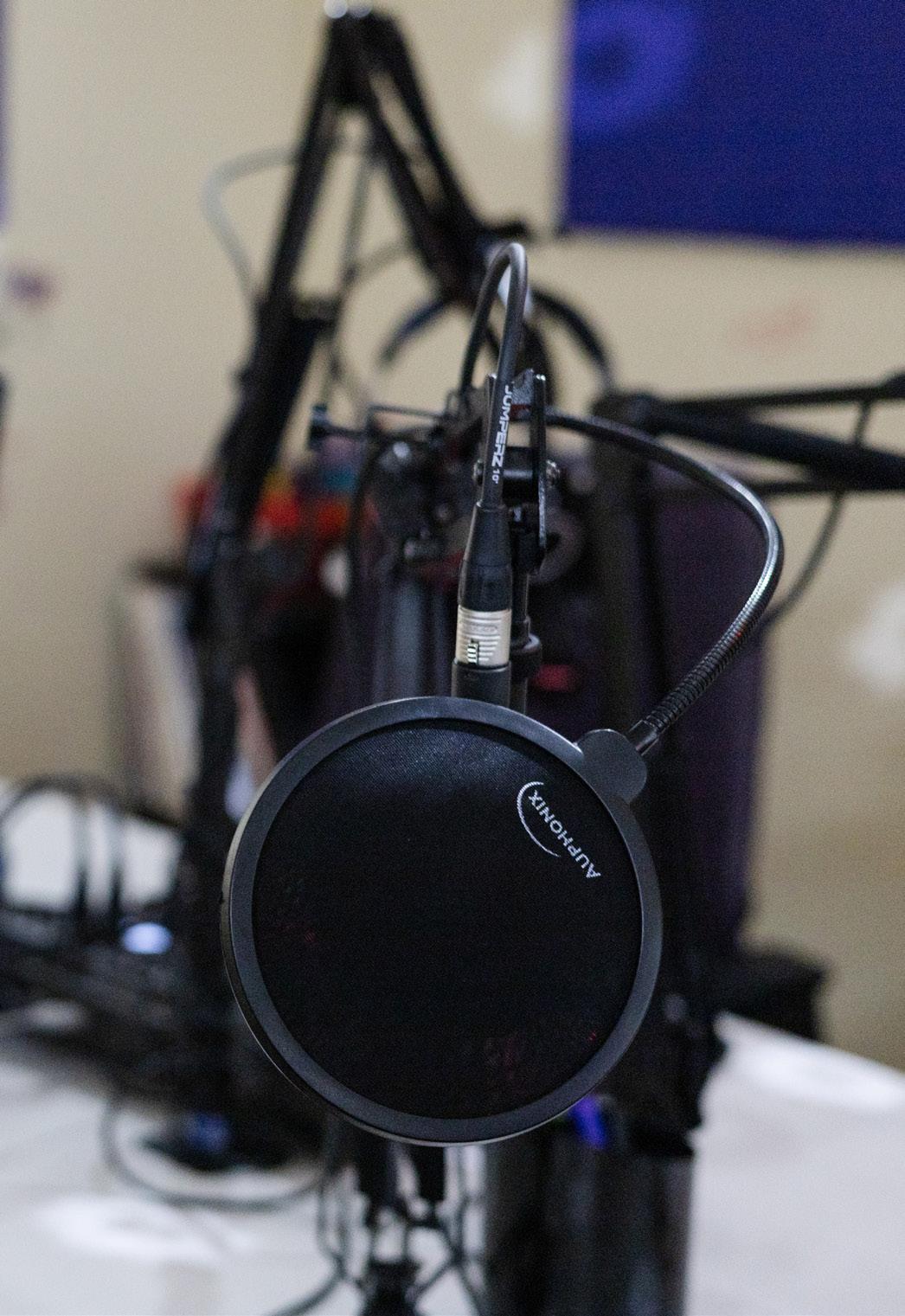
By ISAAC TANNER Reporter
According to Politico, 67 million people watched Harris’ debate with Trump last week. Although far from the viewership numbers from 2016, when explicit political extremism still seemed new, the presidential debate is still an important milestone for the political season.
Let’s not lose the absurdity here. With the background of Project 2025, the Roe v. Wade repealing and constant fear-mongering about violent immigrant crime, the two were supposed to have a “civilized” discussion about the future of an America that Americans are struggling to believe in.
A presidential debate is difficult to balance. Do you hype up your base who were already
going to vote for you, or do you try to appeal to an undecided moderate vote?
The debate rests on responses to classic wedge issues that still galvanize voters. Is abortion healthcare or a crime? Is immigration destroying our country?
When asked about immigration explicitly, Trump didn’t hold back on fear-mongering. For many people the racist tirade about immigrants eating cats and dogs will be the most memorable event of the debate. In the moment, however, it was jarring to hear.
For the debate, Kamala gets free brownie points for not being a belligerent racist arguing with the moderators, but the sad truth is that it really doesn’t hurt his chances of winning. It’s not like it’s the first time Trump has said something racist about immigrants.
It’s just racism. It’s not a new issue.
There’s another interesting moment later in the debate where the racism is explicitly acknowledged. Moderator Adam Muir asks Trump what on earth he has been saying about Kamala not being Black.
“I don’t know,” Trump said. “I mean, all I can say is I read where she was ‘not Black,’ that she put out, and I’ll say that, and I read that she was Black. And that’s okay.”
Here we have the awkward back-peddling of a man who must pretend he’s not racist less than an hour after confidently saying immigrants are eating dogs.
It’s easy to lean into doomerism when you see a former president be so enthusiastically xenophobic, but it’s important to remember how hard he’s trying to make racism seem normal.


12 pm • Brown Bag
Faculty Art Talks Featuring Jude Agboada
12:30 pm • Hispanic Hertage Month: Leading for Impact
12:30 pm • Walker Institute Guest Sepaker: Glenn Loury
4 pm – 6 pm • Crack your Boots with WSU Ballet Folklorico!
4 pm • JC Penney Suit-up Event
6 pm • Women’s Volleyball at Utah Valley
9 am – 2 pm • Community Engagement Fair
11 am – 2 pm • FAFSA Drop-in Help
4 pm – 6 pm • Crack your Boots with WSU Ballet Folklorico!
• Harvest Moon Celebration with WSU Bellet Folkloico
12 pm – 1:15 pm • Nye Lecture Series: Jake Zornes
1:30 pm – 2 pm • Time Management Skills Workshop
5 pm – 6 pm • Yoga, Trauma and Ealing en Español!
6 pm • Jimmy Santiago Baca Reading
7:30 pm • Women’s Soccer at Utah Valley
Editor-in-Chief
Brisa Odenthal brisaodenthal@mail.weber.edu
Managing Editor
Emilie Hart emiliehart@mail.weber.edu
Design & Graphics Editor
Star Neil starneil@mail.weber.edu
Asst. Design & Graphics Editor
Alyssa Nelson alyssanelson2@mail.weber.edu
Photo Editor Anna Kuglar briannakuglar@mail.weber.edu
Chief Copy Editor Justin Steed justinsteed@mail.weber.edu
Asst. Copy Chief Mindy Brown mindybrown1@mail.weber.edu
News Editor Gracie Stephenson graciestephenson@mail.weber.edu
Sports Editor Collyn Cowles collyncowles@mail.weber.edu
Asst. Sports Editor Brayson Brown braysonbrown@mail.weber.edu
Culture Editor Megan Swann meganswann@mail.weber.edu
Asst. Culture Editor Cooper Hatsis cooperhatsis@mail.weber.edu
• Women’s Cross Country at Idaho State Invitational
• Men’s Cross Country at Idaho State Invitational
6 pm • Woman’s Volleyball vs. BYU
7:30 pm • 18th Annual Bonneville Chamber Music Festival presents: “Conversas com Bach”
Translation Editor Nathanael Stout nathanaelstout@mail.weber.edu
Translation Editor Nelly Hernandez Tejada nhernandeztejada@mail.weber.edu
Adviser Deann Carver deanncarver@weber.edu
Business Manager Rob Steedley robertsteedley@weber.edu
• Men’s Golf at Gene Miranda Falcon Invitational • WSU Mount Ogden Hike Tradition
10 am • NUHOPE Suicide Awareness Walk
1 pm • Softball vs. Utah State University Eastern
5 pm • Football at Northwestern State
6 pm • Women’s Volleyball vs Utah State
7:30 pm • Bonneville Chamber Music Festival Presents: “Transition”
